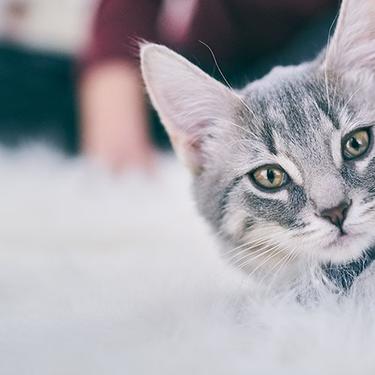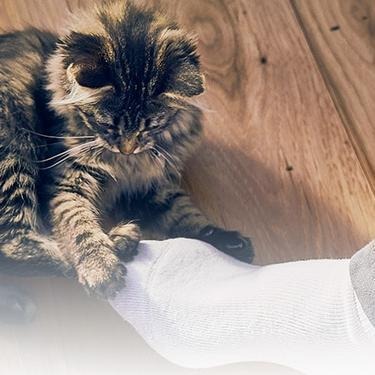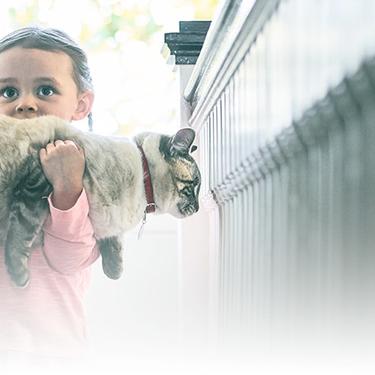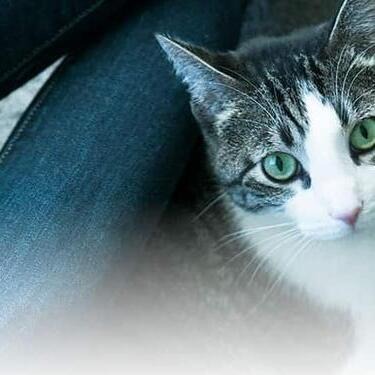
-
Find the right food for your pet
Take this quiz to see which food may be the best for your furry friend.
Find the right food for your pet
Take this quiz to see which food may be the best for your furry friend.
Featured products
 Small & Mini Savory Stew with Chicken & Vegetables Dog Food
Small & Mini Savory Stew with Chicken & Vegetables Dog FoodA delicious complement to the nutrition of Science Diet Small & Mini 7+ dog food
Shop Now Adult Healthy Cuisine Roasted Chicken, Carrots & Spinach Stew Dog Food
Adult Healthy Cuisine Roasted Chicken, Carrots & Spinach Stew Dog FoodDelicious roasted chicken paired with tender vegetables in a succulent stew
Shop Now Adult 7+ Perfect Digestion Chicken, Whole Oats & Brown Rice Recipe Dog Food
Adult 7+ Perfect Digestion Chicken, Whole Oats & Brown Rice Recipe Dog FoodScience Diet's breakthrough nutrition supports ultimate digestive well-being & healthy microbiome for dogs age 7+
Shop NowFeatured products
 Adult Savory Entrée Can Variety Pack Cat Food
Adult Savory Entrée Can Variety Pack Cat FoodPrecisely balanced nutrition with the delicious taste of savory minced chicken to help fuel the energy needs of cats during the prime of their life
Shop Now Adult 7+ Tender Tuna Dinner Cat Food
Adult 7+ Tender Tuna Dinner Cat FoodWith delicious chunks in a decadent gravy
Shop Now Adult 7+ Senior Vitality Chicken & Vegetable Stew Cat Food
Adult 7+ Senior Vitality Chicken & Vegetable Stew Cat FoodImproves Everyday Ability to Get Up & Go
Shop Now -
Dog
- Dog Tips & Articles
-
Health Category
- Weight
- Food & Environmental Sensitivities
- Urinary
- Digestive
- Joint
- Kidney
-
Life Stage
- Puppy Nutrition
- Adult Nutrition
- Senior Nutrition
Cat
- Cat Tips & Articles
-
Health Category
- Weight
- Skin & Food Sensitivities
- Urinary
- Digestive
- Kidney
-
Life Stage
- Kitten Nutrition
- Adult Nutrition
Featured articles
 Do Dogs and Cats have Belly Buttons?
Do Dogs and Cats have Belly Buttons?Learn whether cats & dogs have belly buttons like humans, what the function is, and if there are any health concerns associated with it.
Read More Why Are Dogs and Cats So Cute?
Why Are Dogs and Cats So Cute?If waggy puppy dog tails and furry kitten yawns make you swoon, you're not alone. Why are cats so cute? And, dogs too! Let's find out!
Read More Does My Pet Hate Me?
Does My Pet Hate Me?Learn tips for bonding with your pet if you've ever thought, 'My dog doesn't like me, or 'Why do I have a standoffish cat?'
Read More -


If you aren't planning to breed your cat it's always best to have her spayed. Pregnancy in cats is a significant event, and if you have made the big decision to allow your cat to have kittens, you're in for quite an adventure.
A mother cat is usually more than capable of taking care of a birth on her own and it's normally best to leave her to it. However, there are a few things you can do to help make things easier.
Tell-tale signs
There are a number of signs that indicate your cat is pregnant. The first indicator may be that her heat cycle will stop. Another early sign is that your cat's nipples will swell and take on a darker, red colour. A pregnant cat will also eat more and possibly have bouts of 'morning sickness'. After five weeks, swelling of your cat's stomach will be noticeable and it will continue to swell until she gives birth.
You may see a dramatic change in behaviour. She might suddenly become particularly affectionate and eager to spend time around you. Conversely, you may also find your previously friendly cat becomes sullen and reclusive. Don't be concerned, both of these behaviours are entirely normal.
Cats usually manage birth with little difficulty. If you are concerned about your cat or want to confirm that she is pregnant, take her to your vet. They'll check to make sure your expecting mother is healthy and confirm the pregnancy with a physical check or an ultrasound.
Preparation
In the months leading up to the birth there's not a lot you need to do for your expecting mother, just make sure she continues to receive a good, healthy diet and lots of water.
As soon as pregnancy is confirmed you should switch her to a premium kitten food such as Hills Science Diet to provide extra nutrients for her and her kittens. Keep her on this food until the kittens are weaned. Don't be surprised if your mother-cat doesn't seem to eat a lot right away. She's has an abdomen full of kittens and will probably prefer to eat several times a day in small portions.
As the birth date approaches your cat will probably start looking for a quiet, soft place to nest in. Provide something like a towel-lined box for your cat and encourage her to use it. Don't be concerned however, if in the end, she chooses not to use it.
An imminent birth is usually marked by a milky discharge from your cat's nipples. If you're monitoring your cat's temperature, it will usually drop to below 38.9 degrees C just before delivery.
Once delivery begins your cat may start purring heavily and you will be able to see the contractions. Remember that in most cases a cat is entirely capable of getting through a delivery on her own.


Tasty Tips
Slowly does it
The average litter size is between 2 to 5 kittens. Usually a cat will pause for anywhere between 10 minutes to an hour between kittens. If you know she still has kittens inside her and has taken more than three hours to deliver the earlier ones, you should get her to the vet.
When the kittens are first delivered they should already be tearing out of the amniotic membrane or sac. Usually the mother will help them with this task, if she doesn't, you need to very carefully cut it open to release the kitten.
A mother cat will lick her kittens once they're delivered to stimulate their breathing. If she's too exhausted to do this, or is distracted by another birth, it may be up to you. Rub the kitten gently with a towel the same way a mother would lick it. You should tip the kitten so it is face down, this will help clear fluid from it's airway.
Placenta removal
After every kitten a placenta should also emerge. If a placenta is retained it can result in infection in the mother. Count to make sure you have seen a placenta for each kitten. Don't be surprised if the mother eats some or all of the placentas. This is perfectly normal and safe. If the mother, appears to have retained a placenta, again you need to get her to the vet quickly.
The mother cat will also usually chew off the umbilical cord. If she doesn't, you should help. Tie a piece of sturdy thread tightly around the cord about an inch from the kittens' body. Tie another loop of thread an inch further up the cord, then cut between the two loops with a sharp pair of scissors.
Once the kittens have been delivered and cleaned, they should immediately crawl to their mother's nipples and begin to suckle. At that point it's safe to let your cat and her kittens have some quite time. Congratulations on your new litter of kittens.


One of our staff authors prepared this article for you
Related products

Precisely balanced nutrition with the delicious taste of savory minced chicken to help fuel the energy needs of cats during the prime of their life

Improves Everyday Ability to Get Up & Go

Supports energy level and beautiful fur in mature cats

With delicious chunks in a decadent gravy
Related articles

Discover the benefits of Hill's line of kitten foods and how they provide complete and balance nutrition for growing kittens.

Discover which cat toys games your feline friend might like, and how they are great sources of exercise. Explore our library of articles to learn more.

Discover how to identify cat sensitive skin and what you can do to help your cat thrive from head to paw.

Brushing your cat's teeth is just as important as brushing your own. Learn signs or oral health problems in your cat and how to avoid them.

Put your cat on a diet without them knowing
Our low calorie formula helps you control your cat's weight. It's packed with high-quality protein for building lean muscles, and made with purposeful ingredients for a flavorful, nutritious meal. Clinically proven antioxidants, Vitamin C+E, help promote a healthy immune system.
Put your cat on a diet without them knowing
Our low calorie formula helps you control your cat's weight. It's packed with high-quality protein for building lean muscles, and made with purposeful ingredients for a flavorful, nutritious meal. Clinically proven antioxidants, Vitamin C+E, help promote a healthy immune system.

